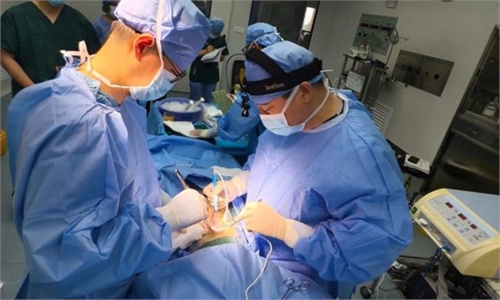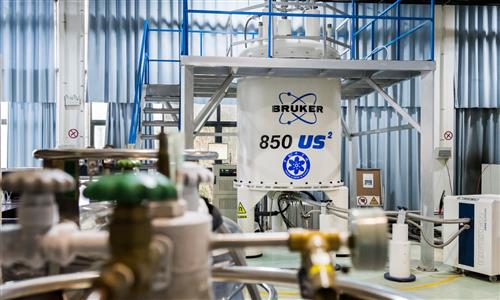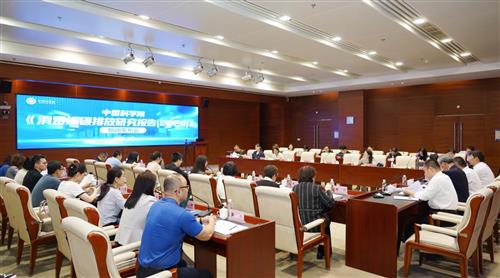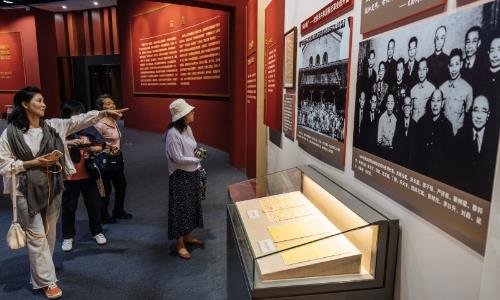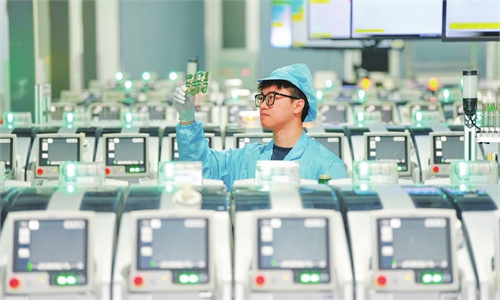LIFE / CULTURAL INFLUENCER
Chinese scientists highlighted in new museum for their contribution
Touching stories, great figures
Inside a newly opened museum in Beijing, visitors gather to carefully examine a piece of old, threadbare clothes and a palm leaf fan, both of which are patchy. One would never guess that both articles belonged to China's renowned scientist Qian Xuesen, one of the key founders of China's space industry.
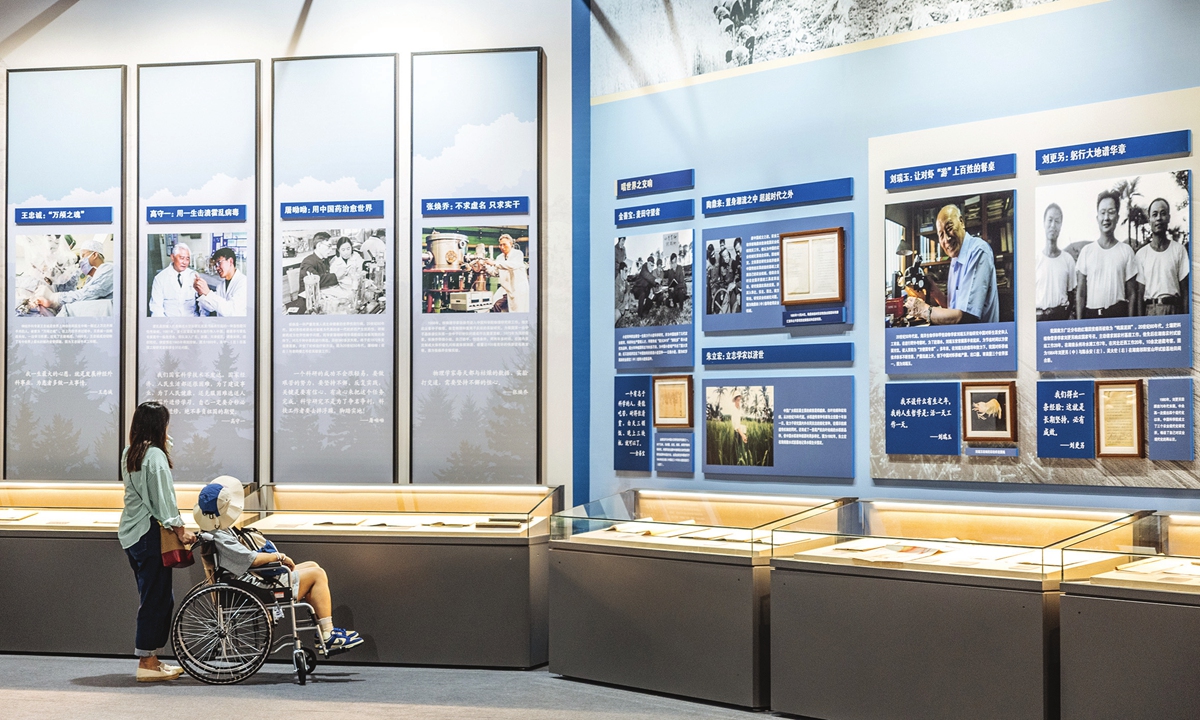
Qian possessed many noble qualities. Take these old clothes and the fan for example. They reflected his frugality and indifference to fame and wealth. He would mend his fan when it was broken, and when he got too old to mend it himself, he would ask his son to help him, introduced the museum guide.
Thursday was the eighth annual National Science and Technology Workers Day in China. The National Museum for Modern Chinese Scientists was officially opened to the public. According to the China Association for Science and Technology (CAST), the National Museum for Modern Chinese Scientists is the first museum globally established specifically for the scientific community of a country.
In the last decade, China has seen success on various technological fronts and emerged as one of the world's most innovative countries. China's pursuit of scientific and technological advancement serves both its economy and the growing demand of its people for improved lives and health. Since the founding of the PRC, numerous scientists have dedicated themselves to national scientific growth and deserve to be remembered and seen.
"The National Museum for Modern Chinese Scientists plays an irreplaceably important role in enhancing the public's understanding of science and promoting the development of China's science and education. The public can better understand the lives of and contributions made by scientists through rich exhibits, detailed introductions, and vivid interactive experiences, thereby more intuitively experiencing the charm and power of science," Meng Lingyun, deputy director of the museum told the Global Times.
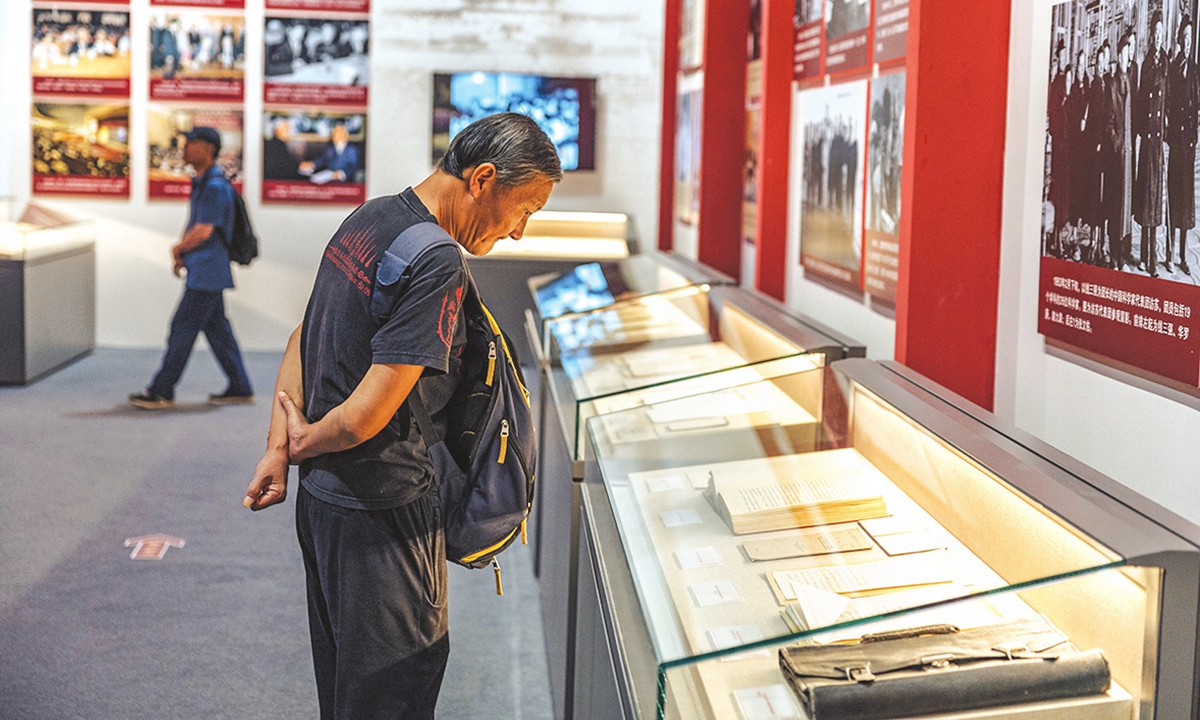
Spanning a total area of 5,000 square meters, the museum, located in the National Communication Center for Science and Technology in north Beijing, has one main exhibition and five themed exhibitions.
The main exhibition showcases more than 400 artifacts and more than 400 rare photographs of over 190 scientists, along with more than 10 large exhibits provided by research institutions.
Since 2009, the CAST has been collecting data on the academic trajectory of veteran Chinese scientists. Over the last 15 years, this project has amassed materials on 674 Chinese scientists, including letters, manuscripts, scientific instruments, works, and audio-visual recordings, making it the largest collection of valuable historical materials on scientists in China. These materials form the main source of the museum's exhibitions.
"I am in the study tour business and I always keep an eye on museums. Exhibitions about scientists used to be scattered at different museums or exhibition spaces such as colleges or universities. The National Museum for Modern Chinese Scientists houses extensive resources in this specialization and can provide students with a comprehensive experience," a visitor from Beijing told the Global Times.
Study tours or educational trips combine learning with travel experiences. These trips are designed to provide students with practical knowledge and hands-on experiences outside the traditional classroom setting. Study tours have become increasingly popular in China, integrating research-based learning with travel.
"I used to feel scientists were out of reach, but through lively exhibits such as notes, visitors feel closely connected to scientists. Scientists are ordinary people, but they achieve extraordinary things in their ordinary lives," said an elementary school student in Beijing.
Tech boosted
Also at the exhibition is a session titled "Family Letters Reading" specially dedicated to letters written by these scientists to their families. The exhibition also highlights China's rich culture and history of letter-writing, as letters were considered as valuable as gold.
Besides these relics, an interactive screen shows an overview of the family letters of more than 10 scientists such as Ding Ying, the "father of Chinese rice science"; Xie Jiarong, China's famed geologist; and Wang Ganchang, one of the founding fathers of Chinese nuclear physics, cosmic rays, and particle physics. When visitors click on the screen, it shows pictures of the actual letters and related stories, as well as audio recordings of the letters.
Wang Shizhen was known as the father of Chinese nuclear medicine. In a letter to his daughter included in the exhibition, he wrote, "Those raised in a 'greenhouse' environment may not withstand tests and challenges. If one experiences a difficult and winding path from a young age and works hard, they will achieve success when they grow up."
"The exhibition helps us understand the inner world of the great scientists. Perhaps one day the children can be aspired, contributing a bit to the country in their own fields," a mother who took her young son to the museum told the Global Times.
There is also an exhibition window that contained handwritten letters and manuscripts. With one click, the window would reveal itself to be a touch screen to present the enlarged details of the old and fragile letters and manuscripts.
On the same day the museum opened to the public, the first batch of members of Unity for the National Museum for Modern Chinese Scientists also made their debut. Consisting of museums, libraries, research institutions, and publishing and media branches, these 66 units will join forces to showcase more Chinese scientists.

Visitors explore photos of Chinese scientists and read their stories at the National Museum for Modern Chinese Scientists in Beijing on May 30, 2024. Photo: Li Hao/GT
Qian played a key role in China's missile and aviation programs after the founding of the People's Republic of China (PRC) in 1949 and was considered to be the "Father of China's Rocketry."Qian possessed many noble qualities. Take these old clothes and the fan for example. They reflected his frugality and indifference to fame and wealth. He would mend his fan when it was broken, and when he got too old to mend it himself, he would ask his son to help him, introduced the museum guide.
Thursday was the eighth annual National Science and Technology Workers Day in China. The National Museum for Modern Chinese Scientists was officially opened to the public. According to the China Association for Science and Technology (CAST), the National Museum for Modern Chinese Scientists is the first museum globally established specifically for the scientific community of a country.
In the last decade, China has seen success on various technological fronts and emerged as one of the world's most innovative countries. China's pursuit of scientific and technological advancement serves both its economy and the growing demand of its people for improved lives and health. Since the founding of the PRC, numerous scientists have dedicated themselves to national scientific growth and deserve to be remembered and seen.
"The National Museum for Modern Chinese Scientists plays an irreplaceably important role in enhancing the public's understanding of science and promoting the development of China's science and education. The public can better understand the lives of and contributions made by scientists through rich exhibits, detailed introductions, and vivid interactive experiences, thereby more intuitively experiencing the charm and power of science," Meng Lingyun, deputy director of the museum told the Global Times.

A visitor studies exhibits at the National Museum for Modern Chinese Scientists in Beijing on May 30, 2024. Photo: Li Hao/GT
Building connectionsSpanning a total area of 5,000 square meters, the museum, located in the National Communication Center for Science and Technology in north Beijing, has one main exhibition and five themed exhibitions.
The main exhibition showcases more than 400 artifacts and more than 400 rare photographs of over 190 scientists, along with more than 10 large exhibits provided by research institutions.
Since 2009, the CAST has been collecting data on the academic trajectory of veteran Chinese scientists. Over the last 15 years, this project has amassed materials on 674 Chinese scientists, including letters, manuscripts, scientific instruments, works, and audio-visual recordings, making it the largest collection of valuable historical materials on scientists in China. These materials form the main source of the museum's exhibitions.
"I am in the study tour business and I always keep an eye on museums. Exhibitions about scientists used to be scattered at different museums or exhibition spaces such as colleges or universities. The National Museum for Modern Chinese Scientists houses extensive resources in this specialization and can provide students with a comprehensive experience," a visitor from Beijing told the Global Times.
Study tours or educational trips combine learning with travel experiences. These trips are designed to provide students with practical knowledge and hands-on experiences outside the traditional classroom setting. Study tours have become increasingly popular in China, integrating research-based learning with travel.
"I used to feel scientists were out of reach, but through lively exhibits such as notes, visitors feel closely connected to scientists. Scientists are ordinary people, but they achieve extraordinary things in their ordinary lives," said an elementary school student in Beijing.
Tech boosted
Also at the exhibition is a session titled "Family Letters Reading" specially dedicated to letters written by these scientists to their families. The exhibition also highlights China's rich culture and history of letter-writing, as letters were considered as valuable as gold.
Besides these relics, an interactive screen shows an overview of the family letters of more than 10 scientists such as Ding Ying, the "father of Chinese rice science"; Xie Jiarong, China's famed geologist; and Wang Ganchang, one of the founding fathers of Chinese nuclear physics, cosmic rays, and particle physics. When visitors click on the screen, it shows pictures of the actual letters and related stories, as well as audio recordings of the letters.
Wang Shizhen was known as the father of Chinese nuclear medicine. In a letter to his daughter included in the exhibition, he wrote, "Those raised in a 'greenhouse' environment may not withstand tests and challenges. If one experiences a difficult and winding path from a young age and works hard, they will achieve success when they grow up."
"The exhibition helps us understand the inner world of the great scientists. Perhaps one day the children can be aspired, contributing a bit to the country in their own fields," a mother who took her young son to the museum told the Global Times.
There is also an exhibition window that contained handwritten letters and manuscripts. With one click, the window would reveal itself to be a touch screen to present the enlarged details of the old and fragile letters and manuscripts.
On the same day the museum opened to the public, the first batch of members of Unity for the National Museum for Modern Chinese Scientists also made their debut. Consisting of museums, libraries, research institutions, and publishing and media branches, these 66 units will join forces to showcase more Chinese scientists.
